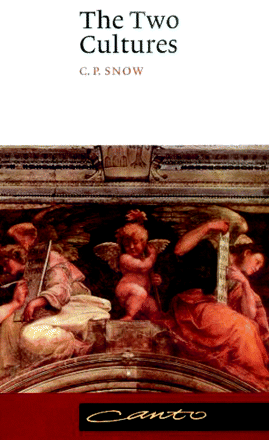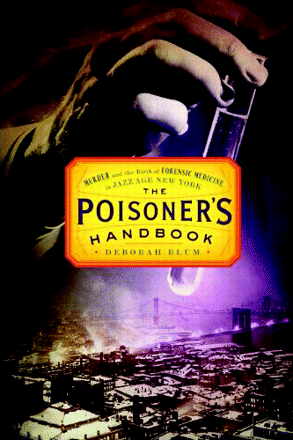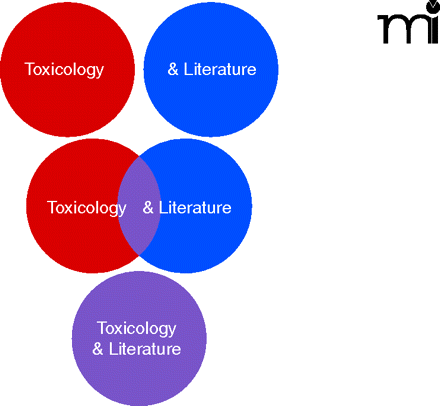Of Toxic Tales and Poisoned Pens: Melding Toxicology and Creative Writing in an Undergraduate Course
- Patangi K. Rangachari, BHSc (Hons) Programme
Introduction
Fifty years ago, in his Rede Lectures at the University of Cambridge, C. P. Snow noted that the worlds of science and literature were drifting apart and that the communication gap between the two cultures did not bode well for modern, advanced societies. Several humanists were outraged when Snow’s comments were later published, sparking great controversy (1–4). It was difficult to argue against Snow’s major theme that science, as a potent force in modern life, involved responsibilities that required public awareness of what science is and does. He noted that it was quite dangerous to have two cultures that either could not or did not communicate with each other, particularly at a time “when science [was] determining much of our destiny, that is, whether we live or die. Scientists can give bad advice, and decision makers [must] know whether it is good or bad.” Snow was particularly thinking of his own discipline of physics, but in the ensuing half-century, biology took over the role that physics had played in the post-war years. Indeed, biology has a particular significance for literature (2, 3), and attempts to use the biological sciences to bridge the gap may be worthwhile.

In the present report, I describe an attempt to meld toxicology and creative writing. Given the popularity of mystery stories, toxicology would appear to be an obvious choice for designing a course to bridge the cultural schisms between literature and science. Students involved in this attempt were expected to learn the elements of toxicology and demonstrate their knowledge through creative writing or reviews of books and films that dealt with poisons.1 The course that I describe here was taught for one session at the University of Calgary (5) and twice at McMaster University. The approaches used at both universities were similar, although there were slight variations. In both instances, an inquiry format was used to provide students with ample opportunities to practice self-directed learning with minimal formal sessions.

Educational Goals
The course attempted to meld process (the how of learning) and content (what is learned). The process elements for such courses are fairly generic, and students who take them are expected to be self-directed, to seek, synthesize, and integrate information from a variety of sources; to share information; and to assess their performance. Students were told that the course would introduce them to the fundamentals of toxicology—the nature of poisons, the ways and means by which they can be introduced into the body, the pathways by which they exert their malevolent effects, possible antidotes, and cultural overlays. They were informed that, whereas conventional toxicology courses and texts (6) focus on ways and means to permit the body to get rid of poisons, the current course would deal with poisons from the opposing perspective: students were to explore poisons and toxins from the poisoner’s point of view. In addition, they were expected to explore diverse genres in literature—short stories, novels, plays, poems, and scripts. Given the sensitive nature of some of the content, the following disclaimer was included in the course syllabus: “Much of the discussions that take place in this course will make ethicists cringe. However, all discussions are purely for academic purposes. I do not encourage any of you to practice what you have learned in this course.”
Course Design
At the University of Calgary, the course, entitled The Poisoned Pen, was taught with a colleague (A. Srivastava) from the Department of English, and the seventeen students who took the course were drawn from different programs (Nursing, Kinesiology, Health Sciences, Political Sciences, English, and the Fine Arts). At McMaster, the students who took the course, in this case entitled Toxic Tales, were drawn from an undergraduate honors Health Sciences Program. The course at Calgary used a blended format, incorporating both face-to-face and online learning (5), whereas at McMaster University, the course was conducted largely face-to-face.
At the initial session, students were given an excerpt from A Shroud for a Nightingale, by P.D. James (7). This particular excerpt described a situation in which a student nurse volunteers to be a simulated patient for a demonstration of gastric feeding. After the young woman died in agony, it is discovered that the milk administered through the esophageal tube had been tainted by poison. This excerpt acted as a trigger for students to identify specific issues related to poisons and also served as a starting point for the class to engage in an introductory examination of the perspective and toxicological motivations of literary murderers who utilize poisons. From the perpetrator’s perspective, a successful poisoner must consider several factors to develop good guidelines: 1) How can one gain access to the poison of choice? 2) How can one make use of information about formulations, routes of administration, and durations of action in order to administer the agent to the victim? 3) How reliable is the poison? One must be sure that it works, relying on information about mechanisms of action and targeting. 4) Which poisons—which mechanisms of action—will best escape detection or police scrutiny? These questions provided a framework for discussing key concepts in pharmacology and toxicology. For example, I demonstrated the importance of these questions in an analysis of the use of atropine in Agatha Christie’s short story The Cretan Bull (8).
Students were then introduced to databases, which was particularly important for the non-science majors. The science students at McMaster were familiar with standard tools such as Medline and PubMed, but even they needed to be introduced to TOXNET and similar databases. Because this was an inquiry course, I did not give an extensive reading list, although I referred students occasionally to a standard text on toxicology (6) as well as some general books linking poisons and literary genres (9, 10).
Student Evaluation
Multiple assessments were used to provide students several opportunities to demonstrate that they had learned the elements of toxicology and could express themselves creatively. In addition to individual tasks, students were required to complete a group project. They were told to select a poison (or a class of poisons) to study in depth and in order to produce a creative piece that would portray the effects of the poison accurately. They were given considerable license to submit their projects as stories, novellas, plays, movie scripts, or even as poems. In addition, each student was required to submit two pieces for assessment, based either on a creative piece or an expository work in toxicology.
At McMaster University, I designed and included two additional assessment exercises: the Creative-Riting IMprov Exercise (CRIME) and the GRoup-IMprov Exercise (GRIME). Students were asked to study a poison in depth and were given three hours to prepare a creative piece (i.e., the “improv exercise”) using specific elements. The only difference between the two activities was that CRIME required individual effort only. (Selected examples are given in Box 1.)
Instructions given to students regarding CRIME/GRIME
THE GRIME (GRoup-IMprovExercise)
This is a Group Exercise. You have all studied in detail a particular poison. Write a creative piece in which the chosen poison plays a significant role. Your piece must incorporate all the following elements:
-
A wild raucous party in a penthouse suite
-
An elegant woman dressed in a shocking shade of pink having a hysterical fit
-
A partially open elevator stuck on the 29th floor of a high-rise building
-
A body slumped in a corner
In addition to your created piece, you will submit an appendix where you explain “facts” that you have gleaned about your poison.
THE CRIME (Creative-Riting IMprov Exercise)
This is an individual exercise. Select any of the poisons you have studied and write a creative piece in which the chosen poison plays a significant role. In addition to your creative piece, you will submit an appendix where you explain how the “facts” that you have gleaned about your poison are incorporated into the creative piece that you have written.
Your creative piece must incorporate all the elements given below:
-
A dying swan
-
A young mother changing nappies
-
An Art Auction
-
A chopped finger found in a bowl containing beets, endives, artichokes and pine nuts
-
An abandoned car on a lonely road
-
A raccoon with its throat slit
I used fairly general criteria for assessment and did not give extensive rubrics. For the creative pieces, the elements that were assessed were creativity, accurate portrayal of the particular genre, factual understanding of toxicology, and the productive use of references. Students were required to annotate all reference citations to indicate to me what they had learned from each source and to explain how they had incorporated the “facts” into their creative pieces. The accuracy of the toxicological information in their stories was a significant component in the assessment, recalling Stevens and Klarner’s wry comment that “[a]ll too often, a writer loses credibility by creating a world very similar to the real one, then shattering it by using an incorrect fact” (9). I also gave merit for “level of difficulty” so as to encourage students to attempt more challenging forms, such as sonnets or movie scripts. For book or movie reviews, students were expected to provide bibliographic information as well. Students had the opportunity to share their ideas with each other and receive feedback from classmates as well as instructors. Brief group presentations were helpful in broadening the knowledge base of all students regarding poisons. In addition, we discussed the elements of good short-story writing, using specific examples.
Results and Discussion: the Course in Practice
Initially, our interdisciplinary course was designed as part of a new initiative at the University of Calgary. Unfortunately, by the time the course was offered, I had left Calgary for McMaster University, and so it was adapted from a face-to-face style course to one that had a significant online component (blended learning). After the initial session, students communicated with me on-line, whereas my colleague was available for face-to-face discussions. We were able to have a video-conference midway through the course, and I was physically present at the end of the course. Despite these challenges, the course was a reasonable success from the instructors’ as well as the students’ perspectives.
At McMaster University, the students were in the same program, and their educational backgrounds and scientific interests were fairly homogeneous. Further, these students had experienced inquiry-based learning and were accustomed to group projects, and the course went quite smoothly.
Student Responses
Students navigated the course challenges very well, selecting a variety of poisons, encoding certain drugs (i.e., morphine, atropine, warfarin, fentanyl, methadone, monoamine oxidase inhibitors, gold salts, fluoroquinolones, and barbiturates); plant products (i.e., yew extract, ephedra, guarana, digitalis, ricin, amatoxin, coprine, and tutin); and poisons (i.e., thallium, strychnine, organophosphate-containing insecticides, arsenic, botox, and curare). The writing forms were likewise diverse: students wrote stories, poems, sonnets, plays, and movie scripts.
The improv exercises (CRIME and GRIME) were well received. Students were very enthusiastic and produced interesting creative pieces within limited time frames. For instance, the three groups that were given the GRIME challenge (shown in Box 1) resulted in two short stories and one script. The poisons they chose were varied and included oleandrin, ricin, and strychnine. In one of the stories, the intended victim was a pesky dog! Clearly, the students enjoyed themselves. In another GRIME, a group managed to write a mini-musical within the limited time frame and, using a piano that was available on the floor where the classes were being held, played excerpts for the class.
A number of students opted to write reviews of books, movies, or TV episodes. A brief list of selected works is shown in Table 1. It is interesting that a number of students selected older books to review, with Agatha Christie being particularly popular. One student, in fact, tracked down a second-hand copy of Anthony Berkeley’s The Poisoned Chocolates Case. Even among the more contemporary authors selected (e.g., Catherine Aird, Elizabeth George, and Sarah Frommer) the rather genteel tradition of the classic whodunit prevailed. In part, the reliance on conventional forms was perhaps related to the topic of the course, which emphasized death by poisons rather than by relying on current trends toward violence and brutality. Some of the choices were unexpected, such as Oscar Wilde’s Lord Arthur Savile’s Crime or even more eccentric, as in Christina Rossetti’s Goblin Market. The student who selected Goblin Market attempted to relate the poetic fairy tale with the emergence of industrialization and polluted foods. Another unusual choice was made by a student who selected a short story originally published in Bengali, providing a translation for the course instructor. Although I had given students the choice of submitting their reports in French, an official language in Canada, no one did. A student who selected Hamlet focused on the murder of Hamlet’s father and sought to determine what exactly was known about poisoning through ear drops in Shakespeare’s time. She noted that Bartolomeo Eustachio had described the auditory tube that bears his name and its nasopharyngeal opening in 1563, and this information may have been available to Shakespeare when he wrote the play several decades later. Similarly, the student who chose to look at Cleopatra’s death attempted a historical analysis of snake poisoning in ancient Egypt.
Books Selected for Review
The movie or TV episodes selected were more contemporary (Table 2). These included two episodes of House where poisons were featured as the agent of death. In one, aptly termed Poison, organophosphate insecticides featured prominently, whereas in the other, Clueless, gold salts were used. A few students chose The Rock, a movie that prominently features the neurotoxic compound VX. Two students discussed the use of diverse poisons in the film Pathology. These included potassium chloride, liquid nitrogen, nitroglycerin, and anesthetics. They pointed out many toxicology errors in the film but excused these by pointing out that the movie was probably in the realm of gothic horror rather than medical fact. Other films selected were White Oleander, where oleandrin would have been the noxious agent, and the Hollywood drama Cleopatra.
Movies/TV Episodes Selected for Review
Evaluations of the Course
Student evaluations of the course were generally positive, both at Calgary and McMaster. At Calgary, although we did not formally evaluate the course, we had students provide their comments. At McMaster, the students were asked to rate several elements of the course using a questionnaire (Table 3). The responses show that the students greatly enjoyed the exercises used in the course and gave a high rating for the course itself (8.47 ± 0.9 on a 10-point scale).
Students Ratings of Assessment Procedures Used
The students in general appreciated the opportunity given to bridge the two disciplines. Group exercises received some adverse comments, primarily owing to interpersonal conflicts. At Calgary, this was a greater issue, as the student groups were assigned by the instructor; at McMaster, the groups were self-selected. Reflective journals were used at Calgary but not at McMaster. Although a number of students felt that that the group work was worthwhile, enough negative comments surfaced. A partial list of enthusiastic comments from the Calgary group included phrases such as “enjoyed creative aspects and attempts to bridge the two cultures,” “made me look more closely at factual information,” “unique experience,” “really enjoyed the class,” “actually learned something,” and “creative memorable projects.” Some truly ugly comments were directed at the group projects and reflection documents, but overall, the students, who were a mixed bunch, felt they had learned a lot about toxicology.

The students at McMaster were quite enthusiastic about the course. They praised the opportunities to express their creativity (six separate comments) and enjoyed the CRIME and GRIME work. Several students mentioned the improv exercises as the best aspect of the course. They also recognized the difficulty of writing creatively in a short period of time, particularly as a group. And they felt that they could have benefited for more discussions on toxicological elements!

Conclusion
Overall, the attempt to meld two disparate disciplines proved worthwhile from the student perspective. As course instructor, it was quite exhilarating for me to see the enthusiasm with which the students plunged into the diverse options. The improv exercises that I had invented for this course worked well and can be readily adapted to other courses to test transfer of learning to novel situations.
Footnotes
-
↵1 The interested reader is directed to a recent review of The Poisoner’s Handbook, Murder and the Birth of Forensic Medicine in Jazz Age New York. See Mol Interv 10:313–314.
- Copyright © 2010

P.K. Rangachari, MBBS, PhD, is Professor (Emeritus) of Medicine at McMaster University, Hamilton, Ontario, Canada. His research publications relate to epithelial transport and smooth muscle function. He continues to teach in the BHSc (Hons) Programme, most recently including courses (Toxic Tales; Drugs, Devices and Desires) for undergraduate science students, melding toxicology, history, and creative writing. E-mail: chari{at}mcmaster.ca; fax 905-540-3825.



